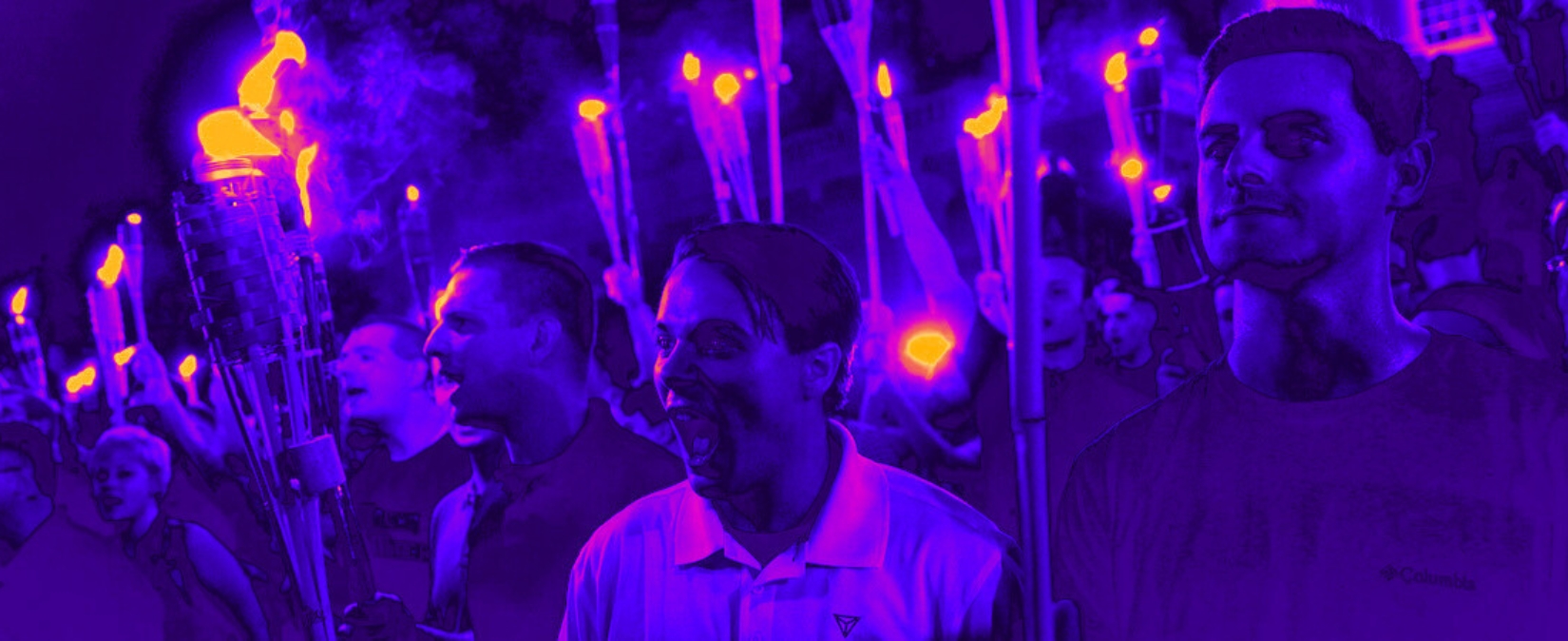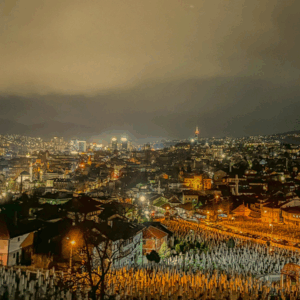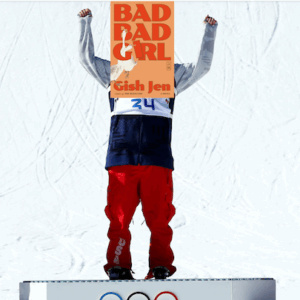
From Charlottesville to the White House: How the “Unite the Right” Rally Altered American Politics
Deborah Baker on Richard Spencer, White Nationalism, and the Challenges of Covering Neo-Nazis
It was Mother’s Day weekend. The weather was gorgeous. The dogwoods dotting the streets of downtown were in their last blooms. Final exams at the University of Virginia were over and commencement was a week away.
In a deconsecrated church on Market Street that Saturday, a spirited debate was taking place between two Democratic candidates for governor. Catty-corner to the church, in Lee Park, the annual, family-friendly Festival of Cultures was underway. Tables were filled with foods from the many immigrant communities that made Charlottesville their home.
At 11:00 a.m. a group of one hundred and fifty men, many dressed in white polo shirts and khaki pants, entered the park, along with ten women in white dresses. Their behavior was disconcerting in a way that only made sense later.
Around noon they set off again from a playground and park one block west and two blocks north of Lee Park, unfurling their various flags as they hit East High. Only the Confederate battle flags would have been readily identified.
A man named Richard Spencer, shadowed by a security detail, led the procession to Court Square, a few minutes away. Word soon got out that something weird was happening near the courthouse. Spencer had just begun his speech when the news reached the reporters covering the candidates’ debate.
Spencer, who had just turned thirty-nine, was a white nationalist, and Court Square enhanced his nationalist themes.
“This is the beginning of a movement,” Spencer shouted through a bullhorn. “This is the beginning of an awakening here in Charlottesville, an awakening that is going around the entire world.”
Spencer may have planned to give his speech in Lee Park, but that was where the Festival of Cultures was taking place. Jackson Park in Court Square was an adequate substitute. Spencer, who had just turned thirty-nine, was a white nationalist, and Court Square enhanced his nationalist themes.
Albemarle Country boasted three Founding Fathers and all of them—Thomas Jefferson, James Madison, and James Monroe—were said to have frequented a Court Square tavern on market days. Also, the focal point of the square and the half-acre park adjoining it, was a statue of another Confederate general: Thomas Jonathan “Stonewall” Jackson mounted on his horse, Little Sorrel.
Nonetheless, it was the statue of Robert E. Lee in Lee Park that provided the professed reason for Spencer’s Charlottesville visit. Many of the men accompanying him carried posters featuring the Lee monument. After a recent and controversial city council vote to find the statue a new home, a circuit court judge had issued an injunction to delay its removal for six months. Into this local tempest rode Richard Spencer on his own high white horse.
For ten years, Richard Spencer had hawked his dream of a white America at conferences here and in Europe, backed in large part by a seventy-seven-year-old scion of the Regnery publishing empire named William Regnery II. Regnery had poured his considerable wealth into the institutes, societies, publishing arms, colloquia, speakers’ fees, dinners, hotel rooms, and bar bills of a far-right brain trust, including Spencer’s National Policy Institute, which he cofounded.
“My support has produced a much greater bang for the buck,” Regnery boasted in 2017, than anything produced by “the brothers Koch or Soros, Inc.”
White nationalists and advocates for white civil rights like Richard Spencer had begun seeing their star rise in the summer of 2015, two years before, when Donald J. Trump began his hostile takeover of the Republican Party. As with Trump, the more the mainstream liberal media tried to lampoon their thought leaders of this brain trust, the more heads it grew.
In an article on the rise of the far right, a veteran New Yorker journalist suggested that men like Spencer were living in an alternate reality where white Americans faced imminent extinction, the South was preparing to secede, and Donald Trump was going to be president.
With Trump’s election the following year, this alternate reality abruptly replaced the one the New Yorker journalist and I lived in. Suddenly Richard Spencer had the answer to the question of the moment: What did we miss? He became the talking head everyone needed.
Then, on the day of Trump’s inauguration, while Spencer was explaining the significance of his Pepe the Frog lapel pin to a film crew, a masked man came up and clocked him. The resulting video went viral on Twitter, YouTube, Facebook, and broadcast media. The remixes, with background music from Joy Division (“Love Will Tear Us Apart”), Radiohead (“Just”), Wu Tang Clan (“Bring Da Ruckus”), and countless others, also went viral. Spencer came to Charlottesville to stage his revenge.
A 2001 graduate of the University of Virginia, Spencer knew the city well. I imagine his thinking went something like this: Charlottesville wasn’t Chicago. It wasn’t Baltimore. It was soft.
The Black community, which had been divided over whether the Lee statue should be moved, was too beleaguered to pose much of a threat. But the city was overrun with his target audience—white progressives, left-leaning university faculty, and impressionable students who could be counted on to kick up a fuss. That fuss would, in turn, ruffle the complacent country club and horsey set, the church folk, and the Cavalier-mad UVA alumni who had never quite left behind their college days.
There was the PR-conscious university administration, a Jewish mayor with highflying political ambitions, and the publicity-hungry Black vice-mayor who had chosen the Lee statue as his signature issue. Finally, there was the picture-perfect city itself. Spencer clearly relished every incendiary word he dropped into the still pond of that spring afternoon.
To the men who accompanied him that day, he spoke of their need to find meaning and identity. Of their desire to be part of a movement, part of a story, a story of ideas. Those listening filled his chestnut exhortations with their unfocussed yearnings. “Our ideas have power.” (We have power.) “Nothing can stop an idea whose time has come.” (Nothing can stop us. Our time has come.) Spencer’s inflection rose with each refrain.
“They are trying to take away our gods. They are trying to take away our ideals. They are trying to take away who we are,” he declaimed. “And in the stead of these monuments, god knows what they’re going to erect: some monument to death, some monument to slavery and the Holocaust….They want to memorialize equality.”
He shifted to a more belligerent tone. “We will not be replaced from this world! Whites have a future! We have a future of power! Of beauty! Of expression! A greater civilization than what our ancestors were capable of! That is our future! That is your future!” With his voice rising in volume and quickening in cadence, he alluded to the city council vote to remove the Lee statue. “They want to put us in a museum!” he shouted.
He hit all the notes, many more than once. Everyone erupted in huzzahs. The rebel spirit of the Confederacy rose again. Or something like that. Channel 29 showed up in time to capture the crowd chanting, “They will not replace us, they will not replace us!”
Spencer had left by the time a dozen or so local activists showed up. They were met by men chanting “Hasta la vista, antifascista” and were soon surrounded. A man in a kippah was assailed with slurs. An altercation left one activist on the ground. The police arrived and ordered everyone to disperse.
Activists trailed the rump procession out of the park shouting, “Racists get out of here!” in reply to persistent questions about where all their Black friends were. The route took the men past a synagogue where a bat mitzvah was underway. They strolled down Market Street toward their cars at the bottom of the hill. By 3:30 p.m. they were gone.
Around 10 p.m. that evening Alison Wrabel, a reporter from the Daily Progress, Charlottesville’s local paper, was walking back from an evening out when she saw a long line of men with torches heading toward the now empty Lee Park. Perhaps the procession had something to do with UVA’s upcoming commencement, a man standing nearby ventured. Chants of “Blood and soil” echoed in the night. Wrabel took a cell-phone video and posted it on Twitter with the caption “Lee Park right now.”
After the torches were extinguished, her phone picked up the chants “No more brother wars” and “You will not replace us.” A lone streetlight and the illuminated steeple of First United Methodist Church lit up the dark. Then the men launched into singing “Dixie” and “Tomorrow Belongs to Me,” the song sung by Hitler Youth in Cabaret.
Wes Bellamy, Charlottesville’s young vice-mayor, was just returning to town when his phone started going off. Wrabel’s video clip had gone viral.
When I came across it the next day, I called my eighty-eight-year-old mother from my home in New York. “Happy Mother’s Day,” I said. “What on earth is going on down there?”
*
After “Charlottesville,” which is how the Unite the Right rally that took place three months later came to be known (at least to those who don’t live there), I couldn’t stop thinking about it. A woman named Heather Heyer had been killed when a car sped down a narrow street and rammed into a crowd of counterprotesters.
Watching the footage of the August 12 rally and the torch march that preceded it, I was spooked by how gleeful these men looked, and alarmed at how young they were.
Watching the footage of the August 12 rally and the torch march that preceded it, I was spooked by how gleeful these men looked, and alarmed at how young they were. Were they, like the election of Donald Trump, a harbinger of some future I was too old or ill-equipped to grasp? Was “Charlottesville” simply their opening salvo?
I wondered how the events of those days would be explained by the future. Though it would be years before I came upon the clip of Spencer speaking in Jackson Park, I was already asking myself what kind of awakening was underway.
Cataclysmic events may at first appear entirely unforeseen, but they don’t come out of the blue. The ground has been prepared for them; the path clear only in retrospect. In this way, August 12, 2017, the day of the Unite the Right rally, reminded me of the September 11 attack on New York, a city I had called home since graduating from the University of Virginia in 1981.
So I asked myself, what hadn’t I understood about the city I was born in? Which chapters in history had I not truly reckoned with?
Virginia had seen more Civil War battles than any other state and paid the steepest price in blood and treasure. But I was hard pressed to see the connection between Charlottesville’s Confederate statues and Hitler Youth, between Southern white supremacy and European fascism. Which histories—whose histories—were in play? How far back did I need to go? It felt as though American and European national creeds were being remixed and weaponized in ways I couldn’t wrap my mind around.
Trump’s election, too, had left me stranded in the present, looking for the signs I had missed, and wondering what sort of future America was being taken to. For Civil War historians, Trump was reawakening the “giant sleeping dragon of American history.” For historians of fascism, Trump was following a script they’d spent their lives studying. Attacks on the press, the judiciary, political opponents, foreigners, and foreign influence were familiar and distinct keynotes in Mussolini’s rise to power.
Trump’s affinity for dictators and strongmen, the incendiary mass rallies promoting a cult of personality, and the explicit incitement of mob and state violence provided more substance to the charge. And when he came to power, he didn’t hide his contempt for international institutions; he scrapped treaties, long-standing agreements, and time-honored democratic norms.
I wondered if fascism was limited to a distinct historical period, or if it was a part of human nature, rearing its ugly head when conditions warranted. Were its seeds to be found in the fateful contradictions of our founding documents and the Faustian bargain we struck over the institution of slavery? Or were they rooted in the flawed character of Thomas Jefferson himself ? The nature of this awakening appeared to go to the core of who we are and the myths and folklore that have sustained us as a nation.
On the second anniversary of the Unite the Right rally, I traveled to Charlottesville and heard a woman give a sermon in First Baptist Church on West Main Street, a church founded in 1863 by freed African Americans. First Baptist hosted many ministers that evening, representing a wide array of religious traditions, but this sixty-four-year-old pastor seemed to stand apart, mounting the stairs with difficulty, wielding her cane like a queen with her scepter.
She didn’t speak of the rally. She described the future, not the past, and gave it a fearful shape and coherence. Listening to her, I had moments of recognition, but they were interrupted by panicked, involuntary denials, preventing me from seeing as far or as clearly as she did.
By the time I met Rev. Brenda Brown-Grooms a couple of months later, a wariness and weariness had set in around the entire subject of August 12. This was particularly true when it came to outsiders asking questions that elicited answers they weren’t ready to hear. Outsiders who were often insensible to the pain they caused simply by asking.
Back then I hoped this woman could put an end to my questions and that would be that. What had she taken away from the events of 2017? What did she think they meant? Not just for Charlottesville but for everyone.
There is a direct path from the Unite the Right rally of August 12, 2017, to the Stop the Steal insurrection of January 6, 2021.
Rev. Brown-Grooms didn’t believe some forgotten chapter of history might throw light on why Charlottesville had been chosen. She didn’t need to time travel to Hitler’s Munich or Mussolini’s Rome. Nobody was surprised by the appearance of these men, she said. And then she looked at me and paused, as if she realized she was talking to a child.
“Nobody Black or brown was surprised. Why would we be? We live with that all the time. We kept hearing stuff like ‘these people are outsiders.’ No, they’re not. They live here. Walmart is their headquarters. They are buying guns and toting them and pointing them. They have a lovely time.”
Pastor Brenda didn’t need to know the history; the present provided evidence enough. Richard Spencer and his brothers represented America’s most indelible commitment. The Daily Progress might put “white supremacy” in quotation marks, as if its existence was purely theoretical, but for Rev. Brown-Grooms white supremacy was the lie America couldn’t stop telling itself.
White people knew it, she said, and so did people of color. Otherwise, why would they need to rig the game? “Why keep changing the goal posts, if we aren’t already as good or better? Why the rage? Why the cheating. Why the lying?”
In those days, I had no intention of writing about Unite the Right. I work in archives and write about people, generally long dead, who lived in historical periods I believed I understood. Besides, I hadn’t lived in Charlottesville since the 1990s. How well did I really know the city and its residents?
I was also wary of giving far-right luminaries attention or nourishing their sense of self-importance. I worried about how my parents and siblings, who lived in Albemarle County, would respond. Lastly, I hadn’t been there.
Later, I asked myself. Was this what Rev. Brown-Grooms expected of a white woman? I kept coming back to her words. When they dragged the Tallahatchie for Emmett Till, she said, they kept coming up with Black bodies. The difference now, she said, is phone cameras. Raw footage has made the ugliness and the lies inescapable.
I began wondering what a Unite the Right archive would look like. Beyond phone footage, there would be tweets, livestreams, podcasts, time-stamped photographs, video blogs, emails, texts, and message boards.
An independent media collective called Unicorn Riot had posted an enormous trove of Unite the Right chat logs. Using this trove, a massive court case, Sines v. Kessler, was being brought against the rally’s principal organizers by those injured that weekend. More material would doubtless be unearthed in discovery.
Could I portray these men without sensationalizing them? What did I owe the victims of that weekend beyond an honest effort? Whose stories would I focus on? I weighed these questions for a long time.
This I knew from the outset. There were not, as President Trump had said, “very fine people, on both sides.” Among those on the street where Heather Heyer was killed were individuals who had known something awful was going to happen; people who had done their best to prepare themselves and the city.
For their trouble, they were dismissed as alarmists and viewed with annoyance. They were given lectures on the First Amendment and dressed down on their language and behavior. Worst of all, like latter-day Cassandras, they were seen by the university, city officials, and law enforcement to constitute a threat, perhaps a violent threat, to civil order. And then, after it was all over, they were blamed for having been on the streets at all. They are still blamed, more quietly now, compounding the traumas they carry.
I wanted to know who they were, what they believed, and what lessons they learned. I wanted to understand why their warnings fell on deaf ears. So, this book ended up being more about these lonely prophets than the likes of Richard Spencer. They don’t have made-up names, they don’t carry flags or sport similar haircuts, and they don’t speak in ways calculated to offend. I believed knowing something of them might better prepare the rest of us for a future in which the certainties of the past no longer apply.
There is a direct path from the Unite the Right rally of August 12, 2017, to the Stop the Steal insurrection of January 6, 2021. As I researched this book, many more towns and cities in America began seeing armed vigilantes staging rallies and protests, protecting their God-given right to this or that, including their right to threaten unarmed people.
Much like school shootings, these clashes began to seem par for the course. The dark money seeding their efforts has found its way into our national politics. I watched the governor of Virginia declare war on “divisive history,” while African American fiction and history and young adult books touching on queer sexuality were removed from library shelves.
Entire curricula were outlawed. Many found themselves unprepared, struggling to ask themselves how well they knew the place where they have lived their lives, their neighbors, their own hearts.
The story Charlottesville tells about itself has long been central to the uplifting one America tells of its beginnings. The people who prepared for the arrival of these men knew a less flattering and far messier one. I asked myself, who might recast this story?
Can we find a different path from the one we are traveling down, with our increasing civil unrest and ever widening political divisions? Would the city of Charlottesville play a role in this re-envisioning? Or would this bleak chapter be willfully forgotten, as so much of America’s dark history has been.
______________________________

Excerpted from Charlottesville: An American Story. Copyright © 2025 by Deborah Baker. Used with the permission of Graywolf Press
Deborah Baker
Deborah Baker is the author of A Blue Hand, The Last Englishmen, Charlottesville: An American Story, and other books. Her biography In Extremis was a finalist for the Pulitzer Prize and her book The Convert was a finalist for the National Book Award. She lives in New York and Charlottesville.












